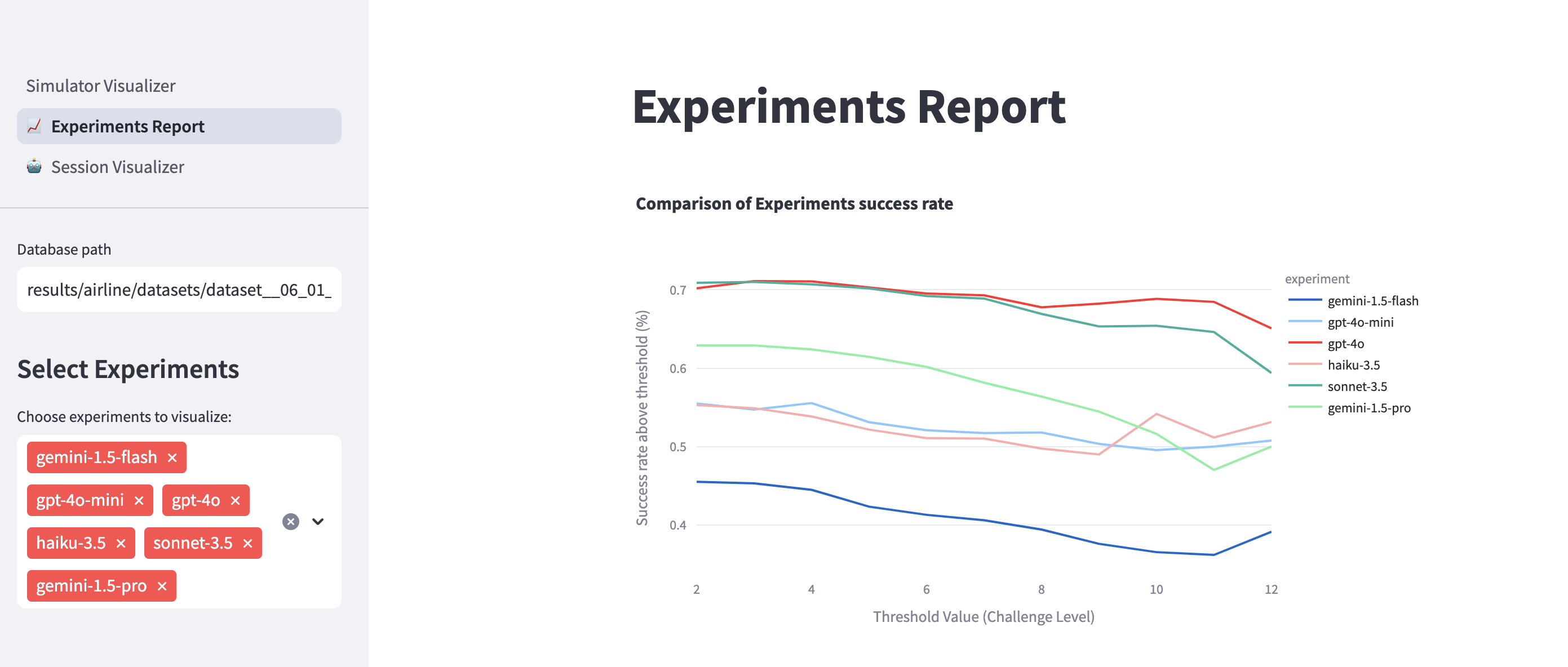Running the Simulator
This guide details the steps required to run the simulator.
1. Run the Simulator
If you're utilizing Azure OpenAI services for user_llm, ensure you disable the default jailbreak filter before running the simulator.
Use the following command to run the simulator:
python run.py --output_path <output_path> [--config_path <config_path>] [--dataset <dataset>]
Arguments:
- --output_path: (Required) Path for saving output files
- --config_path: (Optional) Path to config file (default: config/config_default.yml)
- --dataset: (Optional) Dataset name (default: 'latest')
Example:
python run.py --output_path results/airline --config_path ./config/config_airline.yml
Troubleshooting
- Rate limit messages → Decreasenum_workersvariables in theconfig_defaultfile.
- Frequent timeout errors → Increase thetimeoutvalues in theconfig_defaultfile.
2. View Results
After simulation completion, results will be organized in the following structure:
experiments/
├── dataset__[timestamp]__exp_[n]/ # Experiment run folder
│ ├── experiment.log # Detailed execution logs
│ ├── config.yaml # Configuration used
│ ├── prompt.txt # Prompt template
│ ├── memory.db # Dialog memory database
│ └── results.csv # Evaluation results
datasets/
├── dataset__[timestamp].pickle # Dataset snapshot
└── dataset.log # Generation logs
policies_graph/
├── graph.log # Policy graph logs
└── descriptions_generator.pickle # Generated descriptions
To visualize the simulation results using streamlit, run:
cd simulator/visualization
streamlit run Simulator_Visualizer.py
This will launch a Streamlit dashboard showing detailed analytics and visualizations of your simulation results.
